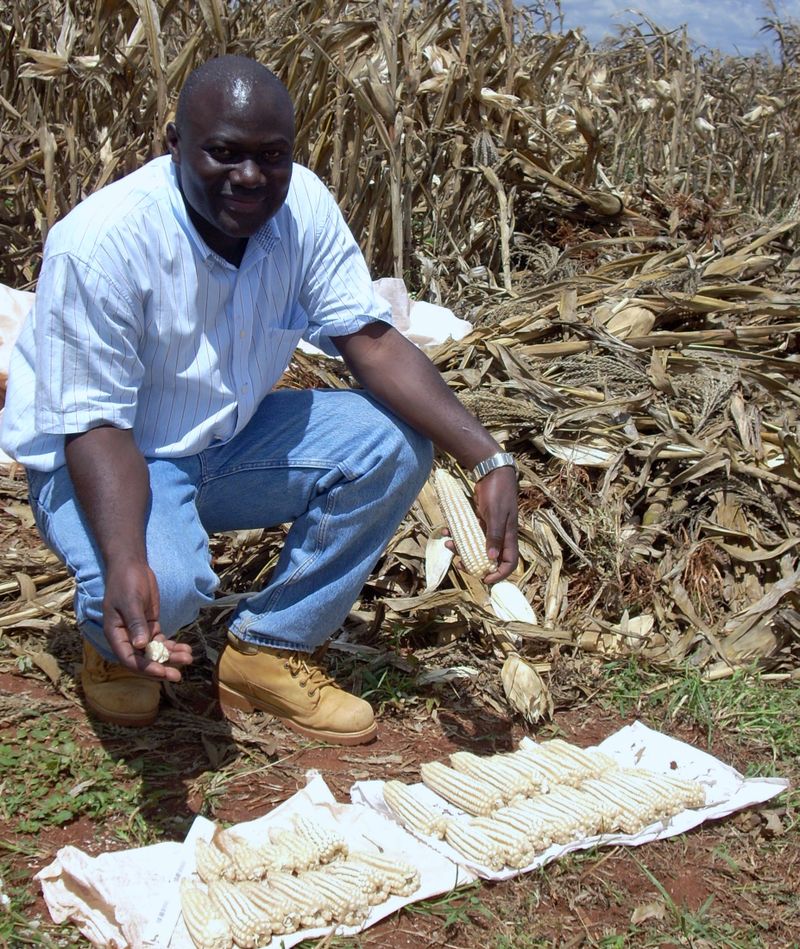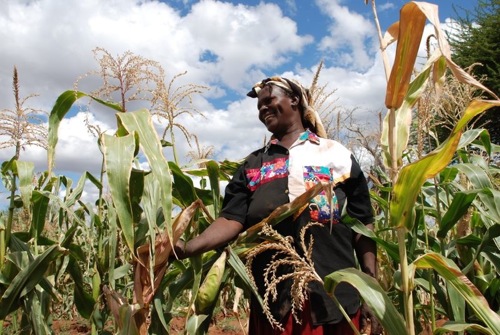
It remains to be seen whether genetically modified crops will ever be grown in east Africa, but in the meantime scientists already are reporting some success with improving the drought tolerance of corn, known here as maize, the old-fashion way, crossing existing lines from as far away as Mexico with lines common to Africa. Agronomist Dan Makumbi says yield improvements though this traditional breeding can mean the difference between whether small-scale farmers can feed their families or not.
The photo shows Makumbi, of the International Maize and Wheat Improvement Center, with the results of two different hybrids, among hundreds that were tested this year for their tolerance to drought conditions that aren't uncommon in parts of east Africa, where corn is a staple food. The crops were planted in June, watered until mid-August and then harvested in November. They received no rain at all.
The group of ears on the left is from a group of plants grown from a seed variety now sold to farmers. Dan is holding one of the ears from the group. Yes, only it looks like a piece of a cob, but it's actually an entire ear, shriveled by drought. The mat on the right holds 19 mostly larger ears from one of the new hybrids he tested. That hybrid turns out to be promising enough to go on to the second round of testing next year. The bad news is that those those 19 ears are the total production from 21 stalks subjected to the kind of drought that agronomists say is common in many part of Africa.
But as meager as that harvest appears that new hybrid could potentially produce enough grain in a severe drought for a smallholder farmer to feed her family and even have some left to sell, says Makumbi. The most promising hybrids have to be testing under normal moisture to ensure that they also are productive and then they will be tried out in different regions to see how they perform.




